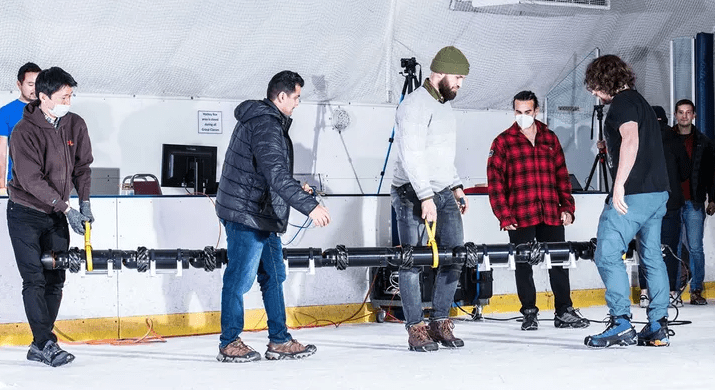This project is called EELS, the full name is Exobiology Extant Life Surveyor (Exobiology Extant Life Surveyor). It is a robotic platform that can move and sample in various terrains and liquids. It can explore the internal geological structure and assess whether there is life in it. And look for evidence of life.
EELS is targeting Enceladus, one of Saturn’s 83 known moons, which is thought to have a liquid ocean beneath its icy surface. In 2005, the Cassini probe discovered plumes of material ejected from the surface of Enceladus, which may be a direct pathway to a liquid ocean.

IT House Note: EELS team members moved the 9-link EELS robot to the ice at the Pasadena Ice Arena
Consisting of multiple identical parts that allow it to propel itself, the EELS also uses rotating propulsion units for its tracks, underwater propellers and gripping mechanisms, unprecedented features that allow EELS to enter the spout of the plume and reach its source.
The EELS project does not currently have a set launch date, and it could be many years away. But if it succeeds, it will be able to explore deep into areas that were once inaccessible.



GIPHY App Key not set. Please check settings